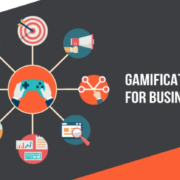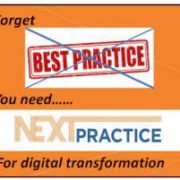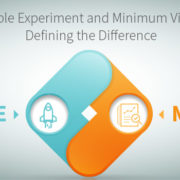“How much value is IT adding to the business?”

This is the one question that most CIOs I talk with struggle to answer. For many organizations, IT’s value is only measured by its ability to reduce costs and optimize the capital expense depreciation of large hardware and software licenses. For others, it’s based on their ability to provide applications and services that enable employees to be more productive. In some cases, IT is seen as valuable resource and contributor to enabling business units to meet or exceed their revenue and profit targets.
Regardless of where your IT group falls across this spectrum of business value there is one unifying theme – IT is not very good at telling its business value story. Part of the problem is that much of today’s story was built on the old Plan, Build, Run model complete with its time consuming requirements process and waterfall development cycles which are now completely out of cadence with the fast-cycle marketplace. This approach has resulted in a large percentage of the annual IT budget being allocated to run the business activities, with a much smaller percentage allocated to change the business activities. This imbalance is only exacerbated by the typical 2% annual budget increases.
How to change the narrative about IT business value

CIOs and their senior leadership teams must make creating and communicating IT’s business value story a mission critical priority. It all starts with a solid framework that defines the multiple ways IT contributes value to any organization. The framework should be realistic, but also simple and capable of being expressed in language that business leaders will recognize and support. The new 4 Zone IT Investment Portfolio is one framework that meets these criteria.

The 4 Zone model enables CIOs to construct an IT Investment Portfolio that apportions the business value of IT in four investment categories. It depicts IT’s spending allocations and provides a clear visual aid for discussing changes to those allocations. For example, based on your organization’s 2016 strategic and operating goals and deliverables, is the weighting of the IT investment allocation aligned with those goals? In this context, most if not all business executives will not only understand the type of value IT investments are targeting, but they will appreciate the challenge and imperative of making smart IT investment choices going forward.
A four zone business value story
Not unlike a personal investment portfolio where risk and return are spread across multiple investment options, the IT investment portfolio is designed to deliver value and returns in four different categories.
Productivity Zone value is created by providing secure and stable operations and maintenance of the company’s systems of record. While most of the ROI from investments in these SORs has been realized, they are still an important and necessary component to the successful operation of any organization. CIOs can deploy our trapped value audit tool to periodically review and identify opportunities to optimize the costs of maintaining and modernizing SORs while also reducing the amount of technical debt. These resources can then be redeployed against new value creation opportunities in the performance and transformation zones.
Performance Zone value is created by delivering a series of user-centric tools, services and solutions e.g. Social, Mobile, Cloud and Data Analytics that enable the company’s businesses to better engage with customers, supply chain partners and other key constituents. CIOs can use our Collaborative IT Governance model to better align future IT investment priorities with critical business outcomes. By contributing directly to creating valuable and enduring customer experiences, IT can demonstrate its ability to help accelerate customer adoption and utilization resulting in new revenues and profits.
Incubation Zone value is created by IT’s help in identifying, testing and validating next generation product, service and business ideas and leveraging technology enabled innovation to deploy them. This zone also acts as a staging area for all IT projects and provides a prioritization process to determine which of the other three zones would benefit the most from the ultimate value of the project. A rapid agile development approach will enable IT to significantly increase its speed to market and throughput for all IT investments.
Transformation Zone value comes from ITs ability deploy new disruptive technologies to enable the company to launch and scale a material net new line of business. An organization’s ability to leverage technology enabled innovation is becoming a critical source of competitive advantage with the emergence of digital enterprises.
This 4 Zone investment portfolio approach provides a structure and common vocabulary to resolve risk reward discussions between IT and its internal business partners across multiple investment options. It also enables the CIO to characterize and justify IT’s investment recommendations, whether at the C-Suite or Board level, augmented by specific business cases that highlight the ROI from each one.
An investment approach that is aligned with the new consumption economy

In today’s subscription-based consumption economy, the value of IT’s products and services are measured by customer/end-user adoption and utilization. To deliver the maximum business value of IT, CIOs need to effectively articulate how each investment will directly contribute to the successful deployment and utilization of each product or service its supports. As such, IT investments must be able to generate immediate returns which accelerate with increased usage. This means that IT has to significantly increase its speed to market and throughput.
The fast cycle cadence of the consumption economy will require IT to replace the old Plan, Build, Run development process with a new Co-Develop, Assemble and Consume process. This new process puts a premium on making a series of investments and getting market feedback on them quickly so leaders can make the needed changes that will drive further adoption and utilization.
Get started with a current state investment assessment
As a first step, CIOs can use the 4 Zone model to do an assessment of how their budget and resources are allocated across their current pipeline of projects and deliverables. This assessment would allocate each project into one of the four zones and create a baseline of where you are making your IT investments today. You can then ask questions like:
- Is the current weighting of investments by zone aligned with our corporate strategy and goals?
- Do we have the appropriate risk reward ratio across our investment portfolio?
- Are we delivering the desired ROI from our portfolio of investments?
- Are we making the right level of investment to accelerate customer adoption & utilization?
- Does our portfolio of investments maximize the business value if IT across our company?
Creating and effectively communicating a compelling IT business value story is not an easy task. Overcoming legacy mindsets about the role and value of IT requires a strong framework; a well-balanced risk vs. reward investment strategy aligned with corporate goals and deliverables; a new development process that is in sync with the fast cycle market cadence of digital enterprises and a new set of consumption market metrics.
Armed with those tools and that approach, CIOs should be well prepared to make the business case for the value of IT.
As always, I am interested in your comments, feedback and perspectives on the ideas put forth in this blog. Please e-mail them to me at pdmoore@woellc.com























